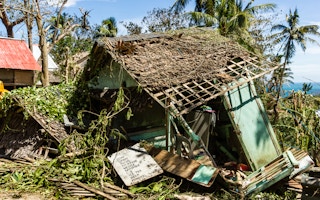Two issues that add great uncertainty to the global growth picture are increasing income disparities and runaway climate change. These concerns are not new of course, as a newly released publication from Results for Development Institute makes clear. But it is striking that the International Monetary Fund now considers rising inequality to be a serious roadblock to economic growth, while some of the world’s economic and spiritual leadership increasingly see global warming as a game changer for people’s well-being.
It’s well established that greater inclusion and better environmental care are socially beneficial in their own right. What is changing in this picture is that strong action on each of these issues would be supportive — and very likely necessary — for sustaining economic growth.
First, climate action contributes to more lasting economic growth. Studies show that the benefits in avoided climate damages far outweigh the costs of taking the needed action. One reason is that the earlier mitigation or adaptation measures are taken to confront climate change, the lower the cost of that action. This calculus applies to avoiding health damages triggered by emissions and toxic fumes or preventing death and destruction from hazards of nature such as typhoons and heat waves.
But the argument goes further. With the rising frequency and intensity of climate disasters, economic costs from the damages will be sizable enough to make an impact on growth rates. It will not be possible in that case to grow as steadily as otherwise unless climate mitigation begins to make a dent on the nature of extreme weather-related events.
“
Be it Brazil’s or Thailand’s great floods in 2011 or Super Typhoon Haiyan in the Philippines in 2013, climate-related disasters aggravate poverty as the poor are not only most likely to locate in harm’s way, but are also the most vulnerable.
Second, greater inclusion supports stronger growth. The arithmetic is simple: the more people are included in the growth process, the better the chances of attaining a given growth rate. The growth process can be more inclusive if disparities in education and health care are lowered. Not only are actions needed to improve access for the lower income strata to education and health, efforts need to focus on improving their quality. Social protection is also vital to making growth more inclusive.
Additionally, economic policies can foster greater inclusion, in turn favoring more sustained growth. For example, cutting subsidies for capital or reducing disincentives for exports can avoid discouraging labor intensity of growth and thus increasingly include lower-income groups in the growth process.
Third, inclusion and climate action interact to reinforce growth. Rising economic inequality and climate risks jointly threaten to roll back years of hard-won gains in poverty reduction. In many countries, inequality is aggravated by climate change and its impacts on hazards of nature. Be it Brazil’s or Thailand’s great floods in 2011 or Super Typhoon Haiyan in the Philippines in 2013, climate-related disasters aggravate poverty as the poor are not only most likely to locate in harm’s way, but are also the most vulnerable.
Hence, climate mitigation and adaptation help reduce disparities or prevent them from worsening. There is a great need to improve the resilience of transport and structures to withstand floods and storms and keep communities connected to health facilities and markets, and for water infrastructure to resist extreme flooding or water shortages, and for drainage systems to account for extreme rainfall.
Further, narrowing income inequalities helps improve the resilience of the poor to climate change. Slashing fossil fuel subsidies that are by and large regressive improves income distribution, or at least does not worsen it, while it has sizable payoffs for reducing carbon emissions. Greater energy efficiency can be both progressive for distribution and salutary for a switch to a low-carbon economy.
Social policies for reducing economic inequality can enhance the adaptability to climate change for the poor. Social safety nets and particularly conditional cash transfer programs can improve the capacity to respond to natural disasters or spikes in food and fuel prices. These interventions can be designed and targeted to address inequalities that worsen during disasters.
The interaction between inclusion and climate change throws up daunting challenges — but also opportunities to find joint solutions.
Vinod Thomas is Director-General of Independent Evaluation at the Asian Development Bank (ADB). David de Ferranti is President of Results for Development Institute. This post is republished from the Asian Development Bank.









